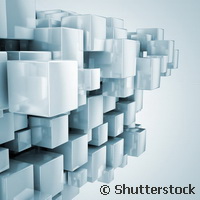Making digital heritage a thing of the present
The preservation of Europe's cultural heritage has been seen as imperative for centuries. But while in the past this often involved locking up artefacts to keep them safe, digitisation now plays a crucial role. And European researchers are leading the way with 3D digital representations. The majority of Europe's museums either maintain a digital collection of relics or carry out digitisation as a backup record. But how good or affordable is it to do this? The EU-funded 3D-COFORM ('Tools and expertise for three-dimensional (3D) collection formation') project set out to make 3D digitisation of artefacts and sites as inexpensive, effective and practical as possible for long-term conservation of cultural heritage. The results have borne fruit. Funding for the project totalled EUR 8.5 million under the 'Information and communication technologies' (ICT) Theme of the Seventh Framework Programme (FP7) for research. Launched in 2008, 3D-COFORM developed a diverse technical research programme to tackle the various aspects of digitisation, including: 3D-capture, 3D-processing, material properties, the semantics of shape, integration with media and textual sources, and describing digitalised objects (metadata). The result is improved and more realistic representations of digital cultural heritage artefacts, as well as better documentation and higher cost-effectiveness. The consortium, led by the University of Brighton in the UK, strengthened the project by incorporating key business aspects into their work. For instance, the team created the Virtual Centre of Competence for 3D (VCC-3D), which offers heritage organisations the support, advice and consultancy services they require to launch their own 3D digitisation projects. There is free access to the VCC-3D website, which provides technology and training advice, as well as a digital resource library. This displays, for example, digital reproductions and visual restorations. The 3D-COFORM partners believe VCC-3D will boost the sector's capacity for mass digitisation of 3D assets. 3D-COFORM also looked at how to improve mass digitisation efforts, and it addressed the socioeconomic impact of digitisation and business models for exploiting 3D assets. A number of activities have already illustrated the potential of the technology. For example, 3D-COFORM hosted a summer exhibition in Brighton, UK, in 2012, showing how 3D technology is used to interpret, conserve and investigate cultural heritage and artefacts. Visitors got a first-hand look at what this sophisticated scientific and technological innovation can do in the heritage sector, for example through glimpses of artefacts ranging from a medieval bronze griffin from Italy to the ancient Egyptian temple of Abu Simbel. The team also showed how simple it is to access databases, providing 3D representations of cultural artefacts at the Victoria and Albert Museum in London, accessible to anyone using x3dom technology - an open source framework that combines HTML5 and 3D content. What makes this technology special is that it enables anyone to access databases of 3D representations of cultural artefacts regardless of their location. The project ended in late-2012, and brought together academic and research experts from Austria, Belgium, Cyprus, Egypt, France, Germany, Greece, Italy and Switzerland.For more information, please visit:3D-COFORM:http://www.3d-coform.eu/VCC-3D:http://www.vcc-3d.org/
Countries
United Kingdom



